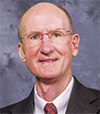There are several things a calf and its mother must accomplish in the first 24 hours to assure survival.
The calf must begin breathing.
The cow should clean, dry and stimulate the calf to want to stand.
The calf must then find a teat and nurse. The cow must stand still to allow nursing and the bonding process to be completed.
Finally, the cow should be in proper body condition and have an adequate supply of quality feed available to her in order to make enough milk for the calf.
In most cases, these events take place smoothly and almost unnoticed. This article addresses these events and when and how to assist in their completion, if necessary.
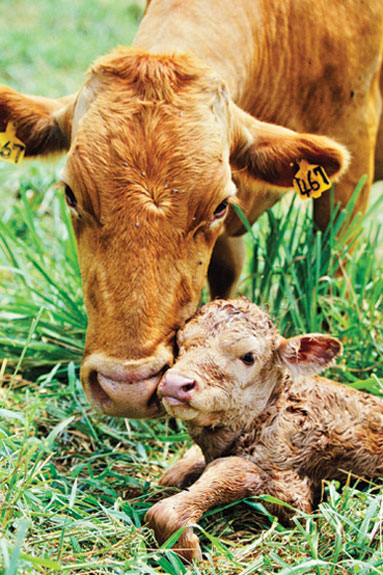
Breathing
We begin with the second stage of labor: calf delivery. When the birth of the frontwards-presented calf is normal or assisted correctly, the calf will automatically take its first full breath within a few minutes of pinching off the umbilical cord during or shortly after delivery.
This allows the calf to build up a need for oxygen and automatic stimulation of the respiratory center of the brain.
In cases of a hard pull, or where calving assistance has been delayed or the delivery too prolonged, the calf may suffocate during delivery due to lack of adequate expansion of the chest once the respiratory center has been stimulated.
Calves presented backwards are especially at risk of suffocating during delivery because the breathing stimulus may have occurred while the calf’s head is still inside the womb.
After delivery, you need to help a calf that is not breathing right away.
First, clear the airway by removing any obvious obstruction over the nostrils and any fluids of concern in the back of the calf’s mouth.
This can be accomplished by pushing your fingers deep in the mouth and wiping the fluids out. Using a small tube with a bulb on the end for suction will sometimes help you get rid of these fluids.
Second, using a piece of straw as a probe, place it into one nostril, moving it in and out in an attempt to stimulate a “sneeze” reflex in the calf.
This reflex allows the calf to blow and further remove some fluids from the airway. This should only take a few seconds to get a response if the air passage is clear and the calf is not too depressed.
A common misconception found in the industry is the practice of hanging the calf by its hind legs to let fluid drain out of the nose, throat and lungs.
Fluid surely drains from the nose and mouth – but this is fluid from the stomach of the calf and not the lungs.
Secondly, hanging of the calf upside-down only makes it more difficult for the calf to breathe because of the extra weight against its diaphragm, which needs to move to bring air in.
This practice has been perpetuated incorrectly and is common among cattle producers because they have used this technique and the calves have survived – in spite of them and not because of them.
While more advanced techniques are available in a hospital setting, they are typically not practical in field settings.
In some instances, a medication may be used for stimulating the respiratory center. This is not always successful. We advise consulting with your veterinarian.
Cleaning and drying
The next event in survival is for the cow to clean the excess fluid off the calf’s body. This becomes important when the outside temperature and wind-chill factor combine to chill the calf.
A newborn loses heat to the environment very rapidly. It is possible for a newborn calf to become so weakened from body-heat loss that it is unable to stand and/or nurse.
All cows and heifers need to be in an area where they can find protection from wind and moisture.
An attentive cow may save her calf’s life by cleaning it immediately after birth. The cleaning action of the mother’s tongue does two things.
It removes the fluid soaking the calf, allowing it to dry off. In addition, it stimulates the calf’s muscle movement and circulation.
These actions in combination help prevent excess loss of body heat from the calf and conserve energy for use in standing and finding a teat to nurse from.
Manually drying and warming are two primary actions you can perform to assist a weak newborn calf in recovering its strength.
Nursing
Standing and getting its first meal is a critical step for the calf. This also requires cooperation from the cow. She must stand relatively quietly while the calf figures things out.
For the best chance of survival, the calf should suckle its first meal of colostrum within two hours of birth. Colostrum provides both antibody protection for disease as well as needed energy and other nutrients to maintain body heat.
The calf normally loses 50 percent of its ability to absorb antibodies from the colostrum within 12 hours following birth and nearly all by 24 hours, so the sooner the calf gets colostrum for immune protection, the better.
In some instances, you may need to control the movement of the mother by putting her in a headcatch to allow the calf to nurse.
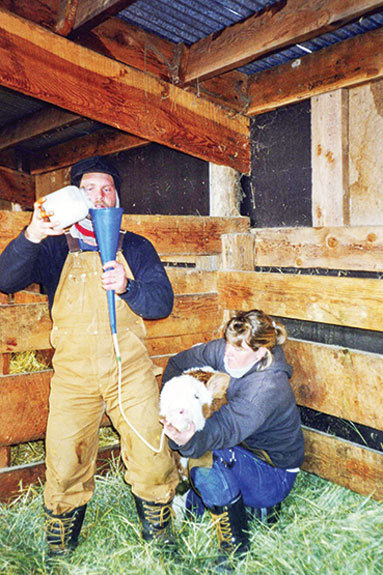
In the case of a willing mother but a weak calf, you may have to milk the mother and give the calf about one quart of colostrum.
This amount further strengthens the calf for a few hours and increases its desire to stand and nurse.
Any time you assist the birth of a calf, you should consider giving the calf a similar volume of colostrum before you leave the mother and calf on their own.
This is a time-saving practice that will benefit you as a herdsman as well as the calf.
Feeding the calf with an esophageal tube feeder is a recommended method for giving all fluids to a newborn calf.
It is safe when done correctly, and imposes little interference and stress on the calf and dam.
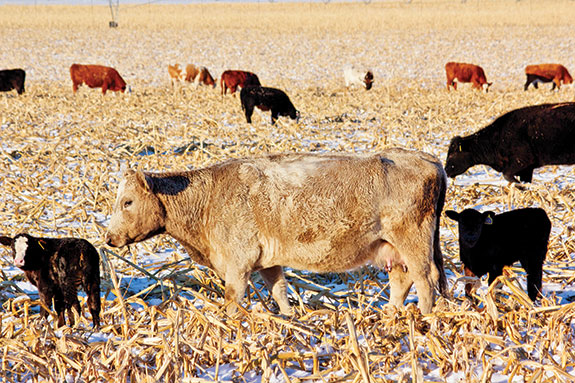
The bonding process
The final step for survival is the bonding process between dam and calf.
This process takes place during the first days of the calf’s life, with the majority occurring within the first six hours after birth.
This starts with the smelling of the calf while cleaning and drying and continues with nursing.
By this process, the cow or heifer identifies its own calf and the calf learns who its mother is.
A heifer has no experience in what this “mother business” is all about. The first few moments after delivering the calf can be important for a heifer to discover and begin to mother her calf. Interference from us or other animals can distract her and delay this process.
We recommend that after an assisted delivery, the calf be placed on the ground somewhat behind and to one side of the heifer before you release the heifer from the headcatch into an isolated area.
Quietly release her in a way that makes her inclined to take a step back and turn toward her calf on the ground.
Provided there is no object except her calf to distract her attention, most heifers will step to the calf and begin the investigation that leads to “mothering.” A little privacy at this point is usually advantageous.
However, heifers will always remain unpredictable – and some will need more encouragement to accept their calf.
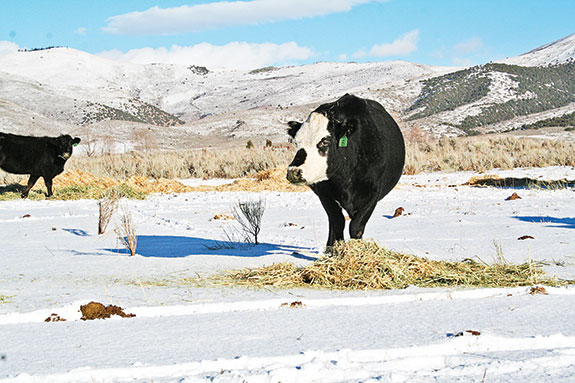
Proper feed for the cow
Since nutritional needs increase dramatically for the cow at calving, it is a good idea to have pairs separate from heavy cows.
Cows that lack feed prior to calving have a longer postpartum anestrus period.
Cows shorted on feed after calving do not settle as easily as those on proper levels of nutrition.
Although the cow’s intake will increase because she has more room with the calf gone, she may also need a higher quality of feed because of the demand for milk production.
Energy requirements increase about 10 to 13 percent to 14 pounds of energy (TDN) per day. In terms of energy, a cow needs to eat 23 pounds of hay at 53 percent TDN per day before calving and 29 pounds after calving.
Both are reasonable amounts if good-quality forages are used and the cows are mature.
Heifers cannot eat this much because they are smaller. Also, the lower the forage quality, the slower the rate of passage and the less they will consume.
It is not unusual for mature cows fed grass residues to consume less than 18 or 20 pounds per day. Good-quality grass hay or alfalfa hay should fulfill their requirements.
In terms of protein, a cow needs 1.6 pounds of usable protein prior to calving and 2.3 pounds after calving.
This is a 30 percent increase in requirement and is needed for milk production in addition to the normal body functions.
If we are feeding grass hay at 8 percent protein, a cow will need 22 pounds of material to meet the pre-calving demand. After calving, she will need to eat 32 pounds of material.
The problem is that grass hay is not this high in protein, and a cow will not eat this amount. We need to supplement post-calving to meet her requirement. Alfalfa hay is an excellent protein source in this situation – as well as some other feeds.
Summary
The time immediately following the birth of a calf is an important period. The calf must begin to breathe, be cleaned and dried off, learn to stand and nurse adequate colostrum, and bond with its mother.
Generally these events occur normally. Help may sometimes be needed. Providing the cow or heifer with an adequate supply of quality feed to produce milk for the calf and rebreed is essential.
Paying close attention during the early hours following delivery will help assure healthy calves at weaning time. ![]()
Jack Whittier is a beef management systems specialist for Colorado State University. Robert Mortimer is a veterinarian at Colorado State University.
PHOTOS
TOP: When the cow cleans the calf, it dries off the newborn and stimulates the calf’s muscle movement and circulation. Photo courtesy of Thinkstock.
MIDDLE: Feeding the calf with an esophageal tube feeder is a recommended method for giving all fluids to a newborn calf. Photo courtesy of Heather Thomas.
MIDDLE: The bonding process takes place during the first days of the calf’s life, with the majority occurring within the first six hours after birth. Photo courtesy of Progressive Cattleman staff.
BOTTOM: A cow needs to eat 23 pounds of hay at 53 percent TDN per day before calving and 29 pounds after calving. Photo courtesy of Progressive Cattleman staff.
